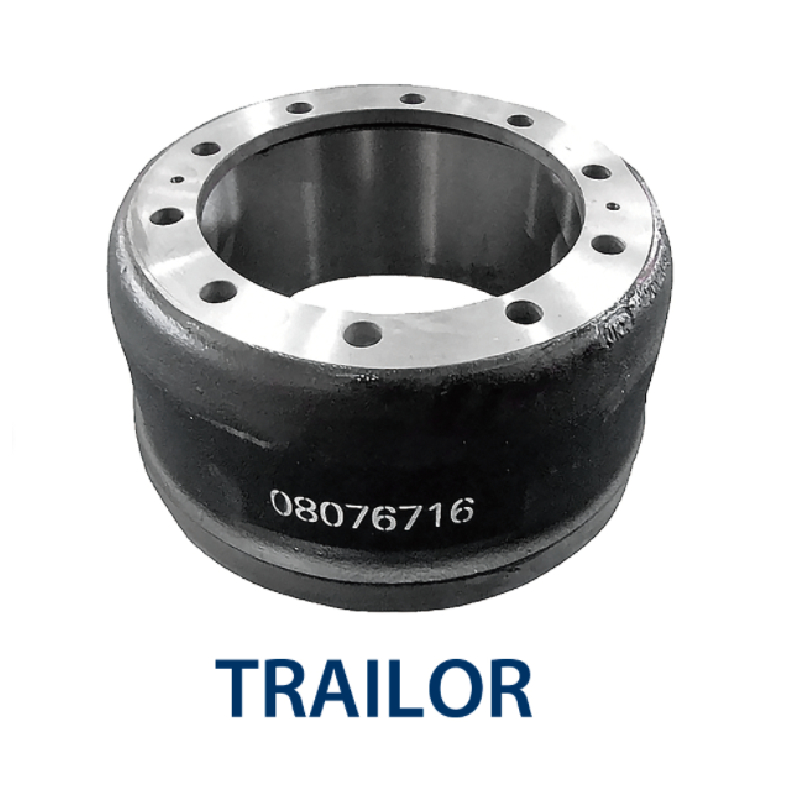Dec . 01, 2024 12:42 Back to list
Essential Components of Brake Drums for Optimal Vehicle Performance and Safety
Understanding Brake Drums and Their Important Parts
Brake drums are critical components of a vehicle's braking system, especially in older models and certain types of vehicles like trucks and buses. Unlike disc brakes, which have become more common in modern cars, brake drums rely on a different mechanism to slow down and stop the vehicle. This article will delve into the various parts of a brake drum, their functions, and why they are essential for safe vehicle operation.
What is a Brake Drum?
A brake drum is a cylindrical component that rotates along with the wheel. When the driver presses the brake pedal, the brake shoes are forced against the inner surface of the drum, creating friction that slows down the wheel. This design is especially effective in heavy vehicles that require more robust braking systems.
Main Components of Brake Drums
1. Brake Drum The primary component, typically made of cast iron or aluminum, which provides the surface against which the brake shoes press to create friction. Over time, brake drums can wear down due to heat and friction, and therefore, regular inspection is necessary.
2. Brake Shoes These are curved components that press against the inside of the brake drum when the brakes are applied. Brake shoes are usually fitted with friction material that provides the necessary grip to create effective braking. Over time, this material can wear out, requiring replacement.
3. Spring Mechanism Springs play a vital role in brake drums. They are used to retract the brake shoes when the brake pedal is released, ensuring that the shoes do not remain in contact with the drum, which would cause unnecessary wear and overheating.
4. Adjuster This component ensures that the distance between the brake shoes and the drum is correct, compensating for shoe wear over time. Most modern drum brake systems are equipped with an automatic adjuster that adjusts the spacing as needed.
brake drums parts

5. Backing Plate The backing plate provides structural support for the brake shoes and other components. It serves as a foundation for the brake assembly and helps keep the system rigid during operation.
6. Wheel Cylinder The wheel cylinder is a hydraulic component that pushes the brake shoes outward against the drum when the brakes are applied. As brake fluid is pushed into the cylinder, it forces the pistons within to move and press the shoes against the drum.
Importance of Maintenance
Maintaining the brake drum system is essential for vehicle safety. Regular inspections can help detect issues such as worn-out brake shoes or damaged drums, which can lead to decreased braking performance and, ultimately, accidents. Signs that your brake drum system may need attention include unusual noises while braking, a feeling of softness in the brake pedal, or a pulling sensation to one side when braking.
Upgrading to Disc Brakes
While brake drums are effective, many drivers are opting for disc brake systems due to their advantages, such as better heat dissipation and improved stopping power. However, brake drums still have their place, particularly in specific vehicles or applications where high torque and heavier loads are encountered.
Conclusion
Brake drums may not be as commonly discussed as their disc counterparts, but they are crucial for many vehicles' safe operation, especially heavier ones. Understanding the parts and functions of a brake drum system can empower drivers to maintain their vehicles better and recognize when something may be amiss. Regular maintenance ensures that brake systems remain effective, ultimately leading to safer roads for everyone. Whether your vehicle is equipped with drum brakes or disc brakes, staying informed about your braking system is vital for your safety and the longevity of your vehicle.
-
HINO Industrial Solutions - ¡Ң���ຽ��е��������˾ | Advanced Efficiency&Customization
NewsJul.13,2025
-
HINO Industrial Efficiency Solutions - ¡Ң���ຽ��е��������˾
NewsJul.13,2025
-
HINO Industrial Solutions - ¡Ң���ຽ��е��������˾ | Advanced Technology&Reliability
NewsJul.13,2025
-
HINO Industrial Efficiency-Jiangsu Hino Industrial|Productivity Optimization&Cost Reduction
NewsJul.12,2025
-
HINO-¡Ң���ຽ��е��������˾|Advanced Industrial Solutions&Energy Efficiency
NewsJul.12,2025
-
Premium Brake Drum Iveco – Durable Drum Brake Drum & Brake Shoe Solutions
NewsJul.08,2025
